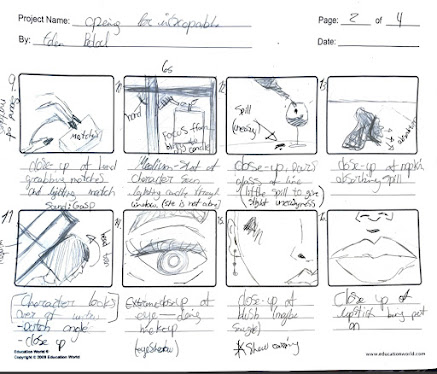Chapter 7
Genre characteristics are the key features of a film that place it within a certain genre. For example, a historical film would feature storyline based on real events and visuals that accurately represent the historical era. These characteristics can be incorporated through storyline, mise-en-scene elements, and sound—music, dialogue, and tone. I will be referring to points made in this article, additionally I will be utilizing my personal class notes regarding mise-en-scene elements and genre.
Thriller films rely on suspense, risk, and keeping audiences hooked with their gripping storylines. They strive to captivate viewers who enjoy plot twists and intense narratives, keeping them on the edge of their seats, eager to see what happens next.
As Alfred Hitchcock, the renowned "master of suspense," once famously said, "Drama is life with the dull bits cut out." Audiences seek engaging storytelling that avoids mundaneness. In addition to numerous twists and turns, thriller plots typically incorporate a nearby threat, whether it's physical, environmental, or a race against the clock. These elements not only deepen the storyline but also evoke tension and anticipation in the audience.
The protagonist usually faces an antagonist who is constantly plotting against them, holding the audience's attention as they eagerly await the protagonist's success, essentially rooting for them. The protagonist ultimately utilizes different tactics to outsmart the villain. With unexpected comebacks and clever improvisation, the film grabs the viewer's attention with intriguing suspense, making any outcome possible. In my opening I will establish both a protagonist and antagonist, this will allow me to add layers to my story.
Protagonist V. Antagonist
Key elements of mise-en-scène include costume design, makeup/SFX, props, and setting. Depending on the context, color can be essential in setting the tone and further developing context. Lighter colors, like white, often symbolize purity, angelic qualities, and innocence, while black is commonly associated with wealth, prestige, and power. In "Inescapable," Catalina, the protagonist, is portraying of the higher class, and would be appropriately depicted in darker attire. Colors can also combine to convey specific themes, such as red and green which associate with the Christmas holiday.
The setting is more than just a backdrop. It’s another component shaping the mood and tension of the story. From busy urban streets to spooky abandoned buildings, each setting adds its own element to the suspense. Through design and location choices, filmmakers captivate viewers in a world where it feels like danger lurks around every corner. My opening’s setting will capture the lifestyle of my protagonist, Catalina, as well as show the viewers her behavior, actions, and how she adapts to her surroundings.
Costume design is crucial in storytelling, suggesting social class, establishing tone, and reflecting different time periods. Historical eras feature distinct styles; for instance, in the 18th century, poofy gowns were traditional, with the upper class often seen in jewelry to display their social stature.
Makeup and special effects are crucial for shaping the suspenseful world of thriller films. They contribute to the tense atmosphere and captivating moments by enhancing characters' looks and creating realistic injuries. Whether it involves crafting unsettling wounds or monstrous creatures, these methods captivate viewers, keeping them engaged in the thrilling story. Catalina will have light feminine makeup with a strong pigmented lipstick color, displaying her boldness and delicate style. I am still considering her eye makeup as I do want to include her applying a shimmer further encompassing her personality.
The image above depicts a man, and many could almost immediately recognize him as a detective, likely from the 1940s-1950s era. The key mise-en-scène elements that imply his profession are noticeable in his attire. His coat, tie, and suit align with the typical attire associated with detectives during this period, setting the timeframe for the film. Additionally, the dark setting allows for an ominous effect, implying mystery. Solely based on the man’s clothing, viewers can begin to envision the character's demeanor and role in the story.
This paragraph will reference my personal sound notes from class. Sound includes dialogue, music, and sound effects, vital for storytelling and engaging viewers. Layering sounds adds depth, with primary sounds being the most noticeable and secondary sounds providing background atmosphere. My opening will feature onscreen diegetic sounds like occasional heavy breathing at tense times, increasing suspense and instilling anxiety in the audience, aiding in the genre development and realism of the film. This will help set the tone and mood of the film, shaping the emotional atmosphere and guiding the audience's interpretation of the story.


















